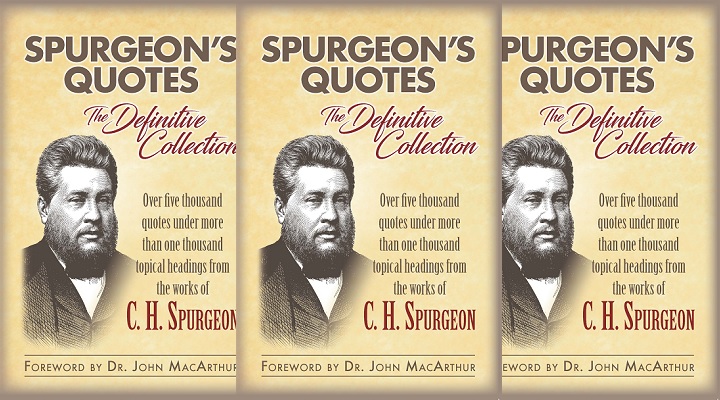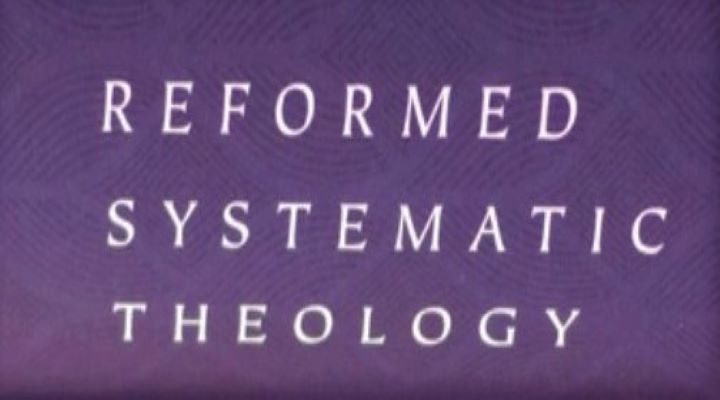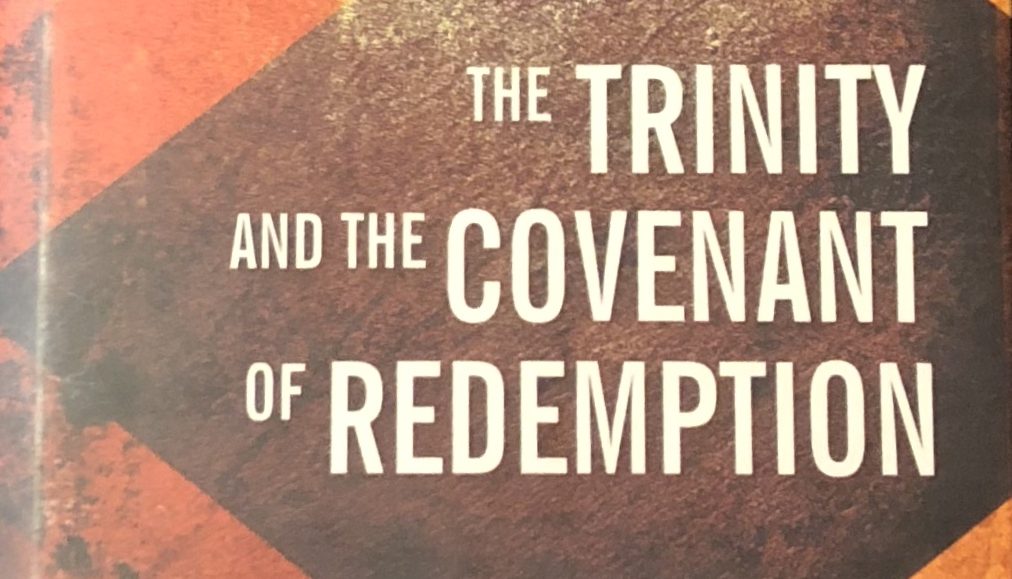I’ve gotten to know Pastor Paul Vawter on Twitter. He is a good brother, though we disagree on hermeneutical methodology. I subscribe to the Redemptive Historical approaching and he the Grammatical Historical Hermeneutic. Though I disagree with what he has written, I wanted to give him a platform for publishing his rebuttal to my recent article on the subject. Why? Because I believe dialogue between Christians over important issues is important. I’m not sure that I’ll respond to this any time soon, but perhaps I will at some point.
The remainder of the blog are Paul’s words:
In a recent article entitled Living in the Light: An Inconsistency in the Grammatical-Historical Hermeneutic Allen Nelson IV critiques the grammatical-historical method of Bible interpretation and offers conservative Christians the redemptive-historical method in its place. He says that those who practice what is also often called “literal” or “normal” interpretation – I prefer to call it “plain sense” – are essentially stumbling around a darkened living room, presumably running into the furniture, stubbing our toes and banging our shins when we could simply turn on the light (the New Testament, understood by means of the redemptive-historical method in this illustration) and see everything with ease and great clarity.
But we are compelled to ask: if it possible that so many who practice plain sense hermeneutics are blind to the real meaning of Scripture, especially the Old Testament, is it not also possible that those who follow the redemptive-historical method misunderstand it themselves? To push the illustration just a bit further, is it not possible that in flipping on the light in the darkened living room, they have inadvertently screwed in a black-light bulb and now everything has an unnatural and eerie glow? How would we know? And how can we evaluate these two methods to see which is truly the more consistent and accurate way to handle God’s precious word?
The Debate
First, he describes the plain sense method in terms of three vital principles including “the intended meaning of the authors,” “the grammar of the original language,” and “the historical setting in which the author lived.” These are insufficient, he says, without the missing piece that the redemptive-historical approach brings to the table, namely, “the completed canon of Scripture.” He cites Jeffrey Johnson saying that the redemptive-historical method begins with grammatical-historical interpretation, “But in addition to that, the redemptive-historical method wants to understand the various texts of Scripture in light of the whole story line of redemption. It wants to understand the beginning of the story in light of the end of the story.”
Now that all sounds pretty good, doesn’t it? We need to read the beginning of the story with an understanding of how the story ends in order to make sense of it all. Let me offer several objections to this line of reasoning. First, it is contrary to the way that we read stories. If this is the biblical hermeneutic, then we must be careful never to allow anyone to read the Scriptures who has not first been trained to know the end of the story, presumably without actually having read it, so that they do not follow their natural inclination to read it from beginning to end expecting it to make some kind of sense. Now, one might respond and say that this is a supernatural book and therefore we must not rely on human methods of interpretation, but this line of reasoning treats the Bible as a mystery that must be decoded rather than a book to be read as revelation from God. No, if this book is intended to reveal God to man, it must be intended that we would read it in a straightforward manner and this is precisely what the redemptive-historical method says we must not do.
My second objection is that the redemptive-historical method is illogical. How exactly may we be certain that we have arrived at the right understanding of the end of the story, if we cannot be certain about the meaning of its beginning until we rightly understand its end? How can we be certain that we have the right interpretation of the New Testament which is required before we can rightly understand the Old? What interpretive method should we apply to the NT in order to make sure we rightly understand it? Do we need to start with the book of Revelation and work backward? Somehow I don’t think that’s what is intended. In fact, the proponents of the redemptive-historical method apply the grammatical-historical method to the NT, the very method whose validity they deny in the OT.
Another objection is that the redemptive-historical method is contradicted by the practice of the NT authors themselves who made extensive use of the OT throughout their writings. If the NT writings themselves are a necessary key to rightly understand the OT text, then how could the apostles and other inspired writers have expected anyone to understand their own writings? If the redemptive-historical method is correct, then the NT becomes a kind of recursion where one must somehow figure out the meaning of the NT uses of the Old without appealing to the OT itself, for how can one rightly understand the OT until he first conclusively interprets the New? But once you somehow come up with the meaning of the NT passage in question, you can now rightly interpret the OT passage to which it alludes, and then with this proper understanding one may return to the New Testament finally ready to understand how the NT writer is using the Old. The whole thing becomes a tangled mess of uncertainty.
Finally, what does the statement mean, “In order for the grammatical-historical approach to really work, it must stay subservient to the completed canon of Scripture”? Does he simply mean that one’s interpretation of a particular passage cannot contradict any other passage of Scripture? If so, then so what? No conservative interpreter would argue otherwise, certainly not anyone seeking the plain sense of the text. If it means that one must have a canon-level understanding of the entire message of Scripture, it begs the question of how exactly one acquires this understanding if not for the grammatical-historical method? How do we get the big picture apart from studying individual texts and doing the hard work of biblical exegesis? And how do we get the big picture if we must have the big picture understanding in order to do biblical exegesis, especially in the OT?
An Illustration
Now at this point we have the illustration of the darkened living room along with some specific examples to demonstrate, in the author’s mind, the inconsistency of the grammatical-historical method. He says, “For example, Jesus is present in Genesis 1:1. You don’t see that by the plain sense of Genesis 1:1 following a purely grammatical-historical method” [emphasis original]. And to this I would heartily agree. But what Nelson fails to realize is that you don’t see Jesus in Genesis 1:1 using the redemptive-historical method either. I am not denying that Jesus was present and active in the beginning at the moment of the creation of the universe, but you will notice if you look at the actual text of Genesis 1:1 that Jesus remains conspicuously absent. So while we agree that Jesus was certainly there in a historical sense, his name does not appear in the account given by Moses, no matter which interpretive method you choose to follow.
And Nelson is simply incorrect when he says “because the Bible has two authors (God working through man) we now know the meaning of Genesis 1:1” [emphasis original]. First, the appeal to the dual authorship of the Bible may be problematic. If by this we mean that the Spirit of God carried along men as they spoke in such a way that their words came from God, then well and good. But if we mean that the human author intended one thing and the Holy Spirit another, then how can we be sure that the word recorded and preserved captures the Spirit’s intent and not merely the man’s? In short, this kind of Scripture with dual intent strikes at the heart of inerrancy, a doctrine which both Pastor Nelson and myself hold dear. In preserving inspiration and inerrancy, we must conclude that the intention of the human author is the intention of the Holy Spirit himself, and therefore discovering what the human author intended in a given passage is precisely the meaning of that passage, no more and no less.
But this is precisely what Nelson denies. On one hand, he states that “the plain sense of Genesis 1:1” [emphasis original] will not reveal the presence of Jesus at creation, but then he says that “the meaning of Genesis 1:1 that Elohim the one and only Triune God created the heavens and the earth” [emphasis original]. What we have then, if the redemptive-historical approach is correct, is a circumstance where the plain sense of the words and their actual meaning are at odds, and in order to understand the meaning we must reject the plain or natural sense of the text. And this is not an aberration, rather it is a feature of the redemptive-historical hermeneutic.
Now the author goes to great pains to ensure us that the NT does not “reinterpret” the Old but merely sheds light on what was already there. And again he is correct when he says, “If you only stay with the grammar of Genesis 1 and its historical context you don’t get the understanding that John has.” But surely that is why we have progressive revelation, is it not? If we could understand everything there is to know about God and the trinity and Jesus’ eternity from Genesis 1, we would not need the rest of Scripture. Frankly, this objection to the plain sense interpretation treats the Bible more like a systematic theology than the progressive self-revelation of an almighty and all-wise God. And rather than encouraging careful exegesis of what Moses wrote, it sends us in search of a theological deduction we may use to explain the implications of Moses’ words. The cart has been placed firmly before the horse.
In affirming the plain sense method, I do not deny that there may be many implications of a single text and that the human author could not have known every possible implication of his words. But this is far cry from positing that the intention of the human author was incorrect on its face and subject to right understanding only after further revelation is given. This is the simple answer to Nelson’s question of why we would want to interpret the Old Testament without making use of the insights given to us in the New. The 15th century reader of Genesis by definition must have misunderstood the meaning of the text according to the redemptive-historical method. There simply was no way for him to know what had not yet been revealed. And this was true for everyone until the completion of the canon. Saying, “Moses had what he needed. The Scriptures are always sufficient” leaves one wondering what for, exactly. Moses did not even have the tools to understand the meaning of his own writings! No, the redemptive-historical approach would leave generations of godly saints with what can only be described as divine misdirection rather than revelation.
Nelson concludes this portion of his article with a series of denials. He denies spiritualizing the text or subjectively placing Jesus into the Old Testament. Ironically, he says “This is using the plain and clear New Testament revelation to interpret the meaning of Old Testament texts” [emphasis mine]. How exactly does one come to know this “plain and clear” revelation? Is it by means of the grammatical-historical method or some other? Why is it that the New Testament is believed to be “plain and clear” while the Old is supposed to be shrouded in mystery? This is not explained. And if the plain sense of the New Testament is sufficient to give clarity to the interpreter, why does this method not work in the Old as well? What is more, how can we be sure that the New Testament will not be superseded by subsequent revelation that will shine an even brighter light, giving us the real, true meaning of every passage? How can we be sure we’re not still stumbling around in the dark waiting for someone else to come along and turn on the light? Surely it is not those who seek the plain sense of Scripture who are being inconsistent, but those who would use the grammatical-historical method in order to try to set it aside.
The Inconsistency
The next objection to the plain sense interpretation is that of inconsistency. He says, “The issue is that a purely grammatical-historical approach demands that you see it based on the grammar and context of that particular passage only. And you cannot consistently do that with the language of the Old Testament” [emphasis original]. This kind of claim, that it is impossible to practice grammatical-historical hermeneutics consistently bears a pretty significant burden of proof. It is not enough to show that interpreters have failed to be consistent, or that one disagrees with their interpretive conclusions. In fact, the very presence of Old Testament commentaries written by those who espouse the plain sense reading of Scripture belies this claim that it is impossible to do so consistently.
An attempt of sorts is made to prove the impossibility the plain sense hermeneutic by saying that the light has been switched on. “There is no turning the light back off. We can’t get back to a dark living room. So, by interpreting the Old Testament with the light on and saying you don’t need the light on, they arrive at their inconsistency” [emphasis original]. Again, this kind of sweeping generalization requires a broad swath of proof. However, let me be charitable and say that it is true that following the grammatical-historical method in every place is difficult. I freely admit that there are times when a less literal hermeneutic might be appealing, and one can understand why so many interpreters look for other methods rather than deal with the challenges that come from trying to understand the text as written. But again, this does not prove that it is impossible, only that it is difficult. And that is precisely why we must follow the plain sense method with dogged determination rather than allow our theological conclusions to intrude into our exegesis. This the redemptive-historical method does by design.
But is it even possible for someone using the grammatical-historical method to come to a right understanding of the meaning of an Old Testament text? Nelson says it is not. “A grammatical-historical approach cannot arrive at the intended meanings of these texts [referring to Isaiah 6 via John 12:41 and Genesis 2:24 via Ephesians 5:31-33] without the light of the New Testament. Thankfully, we have that light” [emphasis original]. Again he is mistaking the full biblical revelation on a subject with the meaning of a single passage. The Bible simply is not a systematic textbook. Of course John 12:41 reveals more than we find in Isaiah 6 alone, but that does not mean that Isaiah’s revelation was incomplete or incomprehensible without something added from the New Testament. It revealed precisely what God in his infinite wisdom desired to reveal in the 8th century before Christ.
And what about seeing Christ in the OT? Nelson seems to think that if a reader seeking the plain sense of the text stumbles across a Christ-centered conclusion, it is by dumb luck rather than design, but this is a serious charge against the Lord Jesus himself! He rebuked the Jewish leaders in John 5:39 for failing to see him in the text of the Old Testament without the help of the New. And on the day of his resurrection, he rebuked two of his own disciples for failing to believe all that the prophets had spoken concerning himself (Luke 24:25-27). He expected them to rightly interpret the Old Testament and see Christ there before a single page of the New Testament had been written. These two texts alone should be sufficient for us to reject the redemptive-historical method.
Progressive Revelation is Necessary for Right Interpretation
This heading is a statement with which I wholeheartedly agree, but the author seems to confuse the nature of progressive revelation with the development of theology. First, he asserts that Matthew 2:15 is essential to rightly understand Hosea 11:1. This is odd, since nearly all Bible interpreters admit that we should use clearer texts to help explain the less clear, and if there’s one thing we can say about Matthew 2:15, it’s that its meaning is uncertain. He’s on slightly surer footing when he says, “I don’t understand the full reality of the Holy Spirit in Ezekiel 36 apart from John 3.” But we might just as easily say that we don’t understand Jesus’ teaching on the Spirit in John 3 without consulting Ezekiel 36, except that is something which the redemptive-historical method cannot allow. You don’t shine shadows onto the light! But it is precisely this kind of incomprehensible circularity with which the redemptive-historical method leave us. Let me illustrate by quoting Nelson directly: “All Scripture is necessary. In fact, you can’t rightly interpret the Old Testament without the New and you can’t rightly interpret the New Testament without the Old” [emphasis original]. So which is it? Do we need the light, shining on the dark room to reveal the furniture? Or do we need the dark room to somehow make sense of the light?
Maybe what we really need is another testament to make sense of both of the current ones. That is essentially what Nelson posits next. “What I mean is, there is more revelation to come….what I mean is that in Heaven we will know God more fully, what angels actually look like, what the new heavens and the new Earth actually look like, all as we bask in Christ’s glory for all eternity.” So we’re right back where we started. Without the help of the New Testament we cannot possibly understand the Old. But if there is more revelation yet to come, and there is, how can we be certain that we’ve gotten it right this time? How do the redemptive-historical interpreters know that they’re seeing clearly and are not simply in another set of shadows waiting to be revealed in the eschaton?
It is nice to be able to close with a bit of agreement. He says, “We don’t have to know all of that in full now because the inerrant, infallible, authoritative, and clear Scriptures we have are all-sufficient for everything we need to know” [emphasis original]. I agree. And I will even go one step further. According to the grammatical-historical method which he rejects, this was true of all the saints during the entire Old Testament era. They did not have complete systematic theologies, but they had the inerrant, infallible, authoritative, and clear Scriptures understood in their plain sense according to the normal use of language.






The OT prophets wondered about the person and the surrounding circumstances through which God would fulfill his promised salvation. (1 Pet1) They operated in types and shadows. But, in the last days of the OC God was revealing the truth to the apostles through the spirit. It seems clear to me that you can’t understand the shadows apart from the substance. How are we to know that the promises were to Abraham and to Christ if the inspired apostle doesn’t reveal this to us. (Gal 3) All scripture is Christotelic, Christ is the goal and fulfillment of the OT.
Haha, yes!
David,
Sorry for the late reply. I didn’t see your comment until today.
1 Peter 1:10-12 is certainly an important text, but I’m not sure it will bear the weight you are trying to place on it. While Peter does say the OT prophets searched to understand the timing and identity of the person who would bring about the salvation they prophesied, he says nothing about types and shadows. And he also indicates that the answer to at least some of their questions was revealed to them, namely, that this salvation would not be accomplished in their generation but in the future. None of this implies the kind of obscurity the redemptive-historical method relies upon in the old covenant era.
The reality of progressive revelation has no bearing whatsoever on the meaning of previous revelation. Galatians 3 does not in any way change or reinterpret the plain meaning of the promises recorded in Genesis. The fact that Paul grounds his argument in the language of the OT means that a careful reader, practicing consistent grammatical-historical interpretation would see and understand what God intended in Genesis 12. This is not types and shadows but plain speech, and therefore, revelation rather than obscurity.